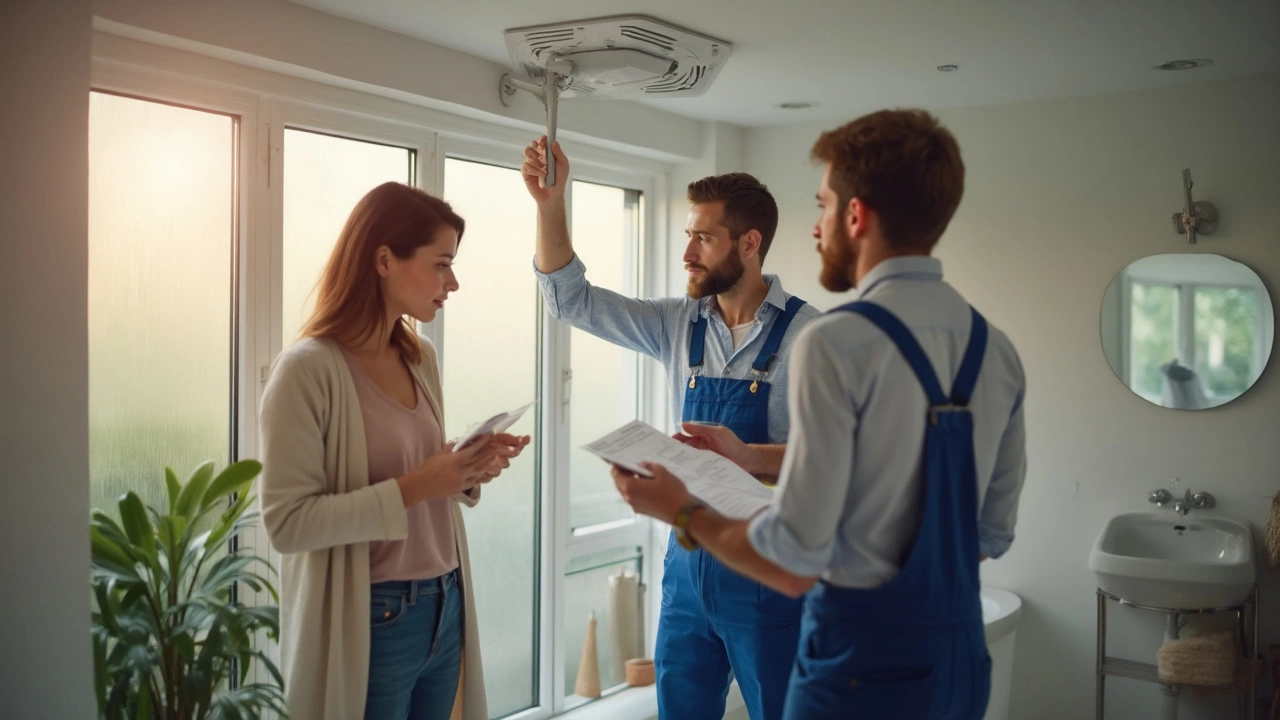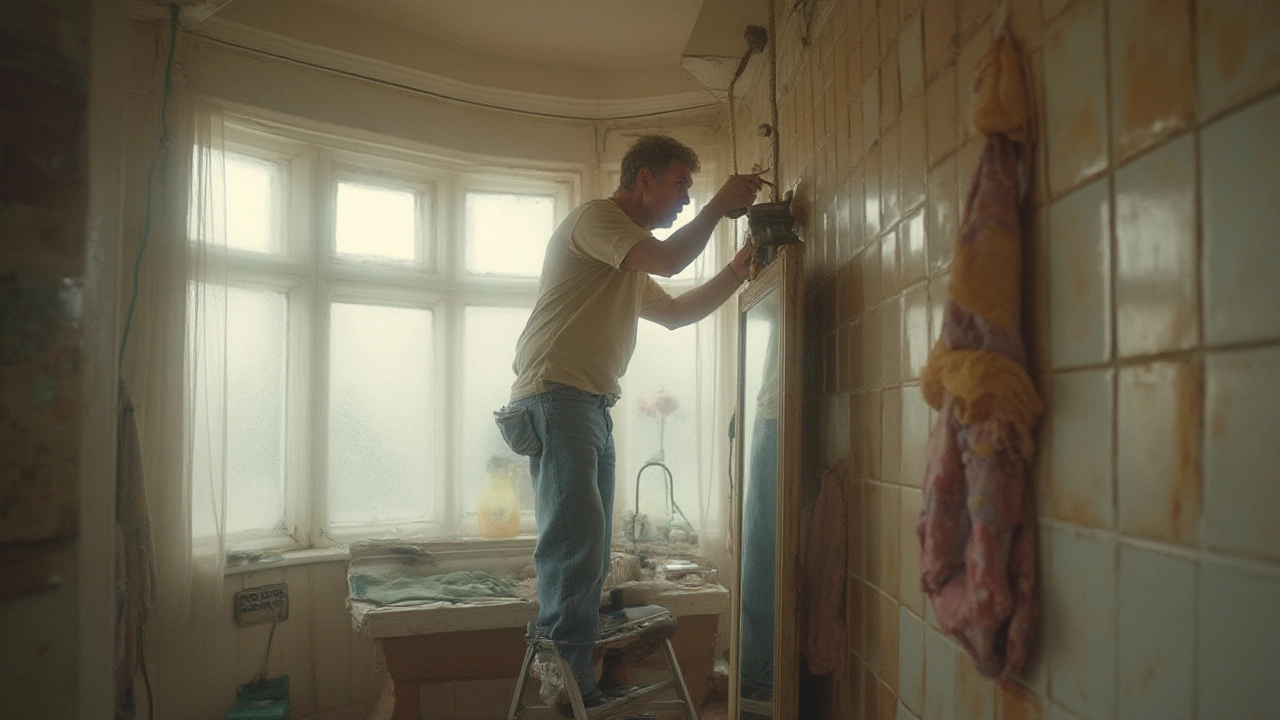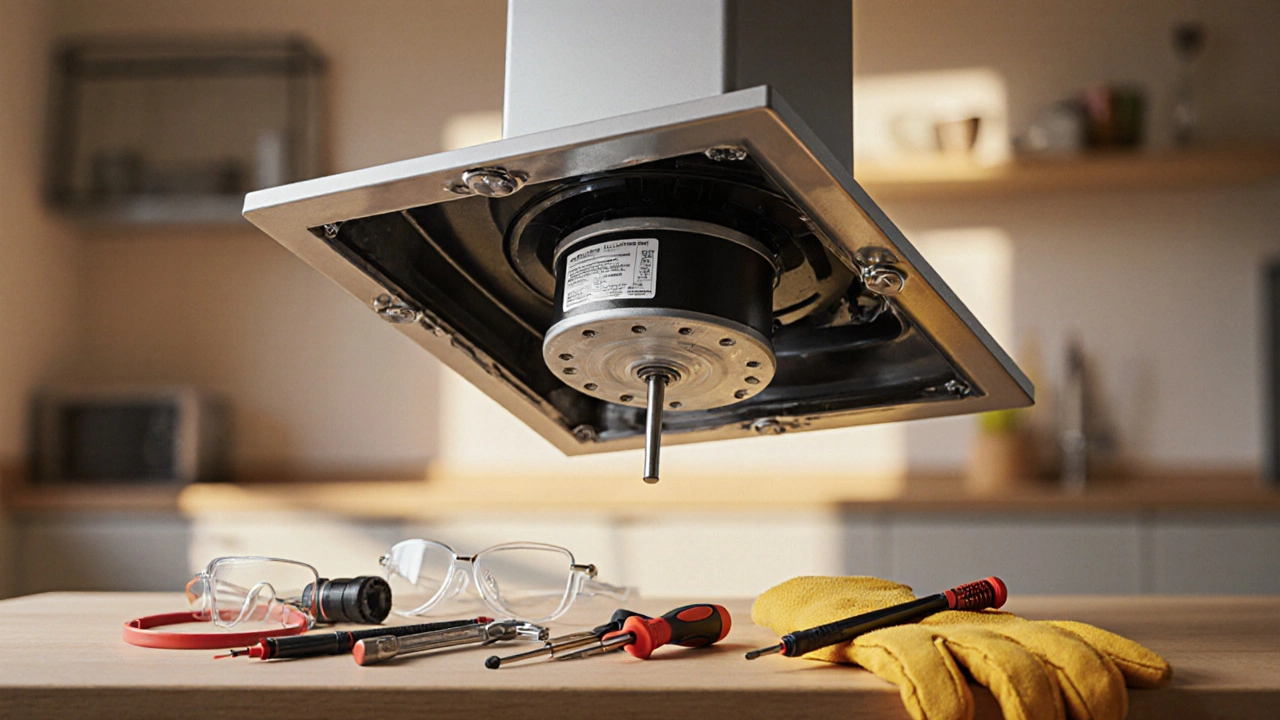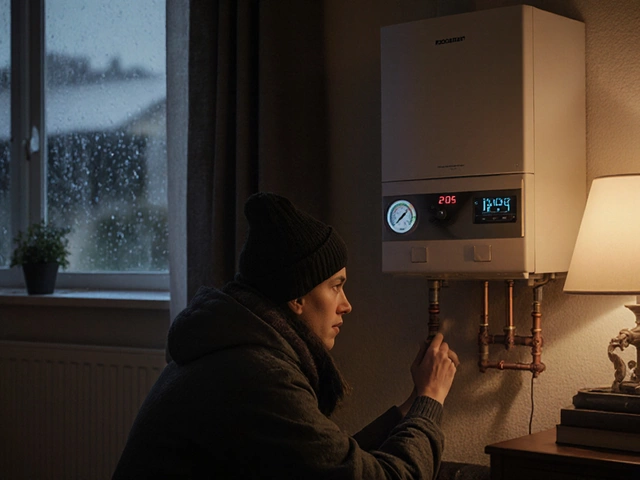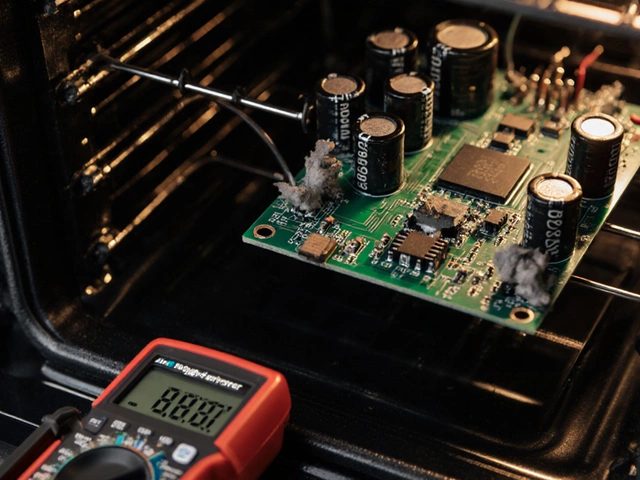Extractor fans are one of those things most people ignore—until the bathroom feels like a sauna or the kitchen smells hang around for days. And then, when it’s time to install a new fan or fix a broken one, the big question pops up: who’s actually meant to do this job?
It’s not just about screwing something to the wall. An extractor fan needs to be wired safely (because, yes, electricity and bathrooms are a risky combo), vented properly, and often has to follow building rules—especially if you're renting or live in a place with strict codes. The right installer isn’t always obvious, but there are a few common choices, and picking the wrong person can mean noisy fans, mould, or worse.
You're probably thinking, is this a job for an electrician, or can a regular handyman swing by and sort it out? There’s more to it than you might guess, and cutting corners ends up costing more in the long run. A botched install could mean your fan just pushes damp air into your attic, leading to mould—a classic rookie mistake.
But getting it sorted out doesn’t have to be a headache. I’ll break down exactly who installs extractor fans, what separates a real pro from a wannabe, and how to sidestep the classic pitfalls. Plus, if you’re bold enough to try fixing it yourself, here’s what you absolutely need to know first.
- Who Installs Extractor Fans?
- What Makes a Pro the Right Choice?
- DIY vs Hiring: What Can Go Wrong
- Insider Tips for Choosing the Best Installer
Who Installs Extractor Fans?
So who should you actually call when you need an extractor fan fitted or fixed? Here’s the deal. The number one choice is a certified electrician. These are the folks trained to handle wiring safely, which is super important anywhere there’s moisture—think bathrooms and kitchens. An electrician not only wires things up the right way, they also know what local codes require. That keeps you on the right side of the law, which really matters if you’re planning to sell or rent your place someday.
Some general handymen offer extractor fan installation, but you’ll want to double check their qualifications—especially for anything electrical. In the UK, for example, Part P of the Building Regulations means only registered electricians should touch bathroom electrics. Messing this up isn’t just risky, it could void insurance or cause major headaches later on.
Plumbers sometimes offer extractor fan installation as part of a big bathroom job, but they’ll often sub out the wiring to an electrician. Same goes for kitchen fitters—a good one has reliable tradespeople on speed dial, but you shouldn't assume they’ll do every part themselves. DIY might cross your mind, but unless you’re confident with wiring and drilling through walls, that’s a big gamble.
- Electrician: Best for safe, legal installs—especially in kitchens and bathrooms.
- Handyman: Fine for simple swaps, but not for wiring or new installs unless they are properly qualified.
- Plumber or Kitchen Fitter: Usually includes the fan in a bigger job, but may not do the electrics themselves.
- DIY: Only for those who actually know how to deal with wiring and venting.
Here’s a look at who usually gets these jobs done, based on a survey of UK trades completed in 2024:
| Installer | Percent of Extractor Fan Installs | Typical Price Range (£) |
|---|---|---|
| Electrician | 65% | 80–180 |
| Handyman | 20% | 60–150 |
| Plumber/Kitchen Fitter | 10% | Usually part of bigger job |
| DIY | 5% | 30–90 (for parts only) |
The bottom line? An electrician is your best bet for extractor fans, especially if anything needs rewiring or you’re installing it somewhere with moisture. That way, you don’t end up with a useless fan—or worse, a bathroom full of mildew and mounting repair bills.
What Makes a Pro the Right Choice?
When it comes to extractor fan installation, not everyone who can hold a screwdriver is up to the task. Getting the right pro isn’t just about convenience: it’s about safety, lasting results, and not having to redo everything in six months.
Licensed electricians are the go-to for most extractor fan installs, especially if wiring is involved. In the UK, stats from NICEIC show that nearly 70% of serious domestic electrical faults are due to poor installation, usually from unqualified workers. So, going cheap by hiring an unskilled handyman can turn out expensive fast.
But how do you spot a real pro? Here’s what to look for:
- Certification or licensing (Part P registered in the UK, or the equivalent where you live).
- Experience with both wiring and venting—some guys are great with wires, but don’t know a thing about airflow or condensation problems.
- Good reviews or references, especially for bathroom or kitchen work.
- Insurance, so if something goes wrong, costs won’t land on you.
Pros follow basic steps that amateurs often skip:
- Check existing wiring for faults or outdated parts.
- Vent the fan outdoors, not into a loft space, which is a classic cause of damp.
- Test airflow with simple kits or smoke tests, not just by switching the fan on and hoping it works.
- Seal any gaps to stop moisture leaking back inside.
Also, there are strict building and electrical rules for extractor fans, especially in bathrooms (zones around water demand extra protection). Missing these steps means risking fines, blown fuses, or worse.
| Install Type | Who Should Do It | Common Risks if Not Pro Installed |
|---|---|---|
| Simple Replacement (like-for-like) | Handyman or Electrician | Loose connections, fan vibration |
| New Installation (wiring involved) | Licensed Electrician | Electrical shock, fire hazard |
| Bathroom/Kitchen Install | Part P Registered Electrician | Mold, water damage, invalid home insurance |
So, even if your mate down the street says he can "sort it out," if he’s not qualified or doesn’t know building codes, you’re honestly rolling the dice. Always check for paperwork and ask about past installs—it’s not awkward, it’s smart.
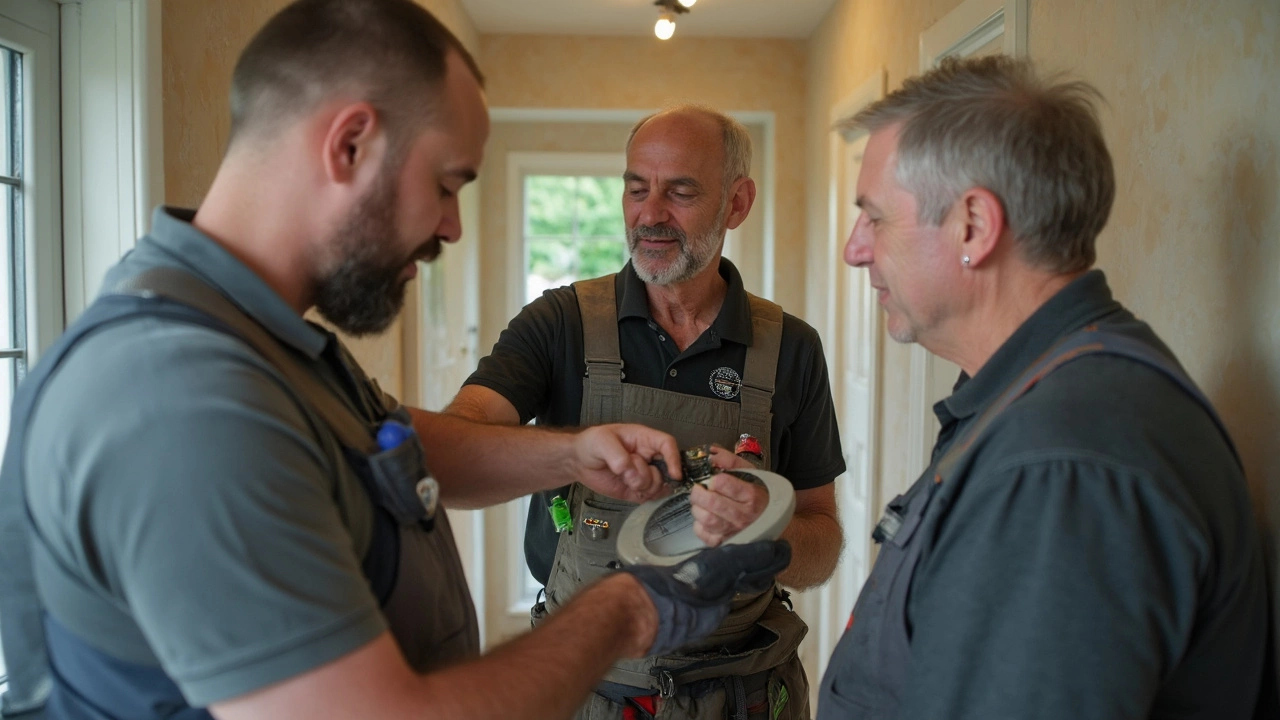
DIY vs Hiring: What Can Go Wrong
Thinking about installing an extractor fan yourself? It's tempting to save a bit of cash, but this is one of those jobs where mistakes can creep in fast. Here’s what really happens when you go DIY instead of hiring someone who does extractor fan installation for a living.
First, let's talk wiring. Extractor fans usually need to be hooked up to your household mains, often with a connection to your bathroom's lighting circuit. If you mess this up, best-case scenario, your fan won't work. Worst-case? You could end up with a serious shock hazard or even an electrical fire. Most building codes in the UK actually require extractor fan installation to be done by a certified electrician, especially near water.
The next thing that trips people up is ventilation. Fans that vent into lofts instead of outside end up just moving the damp around, which does nothing to stop mould. A survey by Electrical Safety First found that one in five DIYers have later called out a pro because something went wrong—water leaks, noisy fans, or blown fuses tend to top the list.
Here's a quick comparison so you know what to expect:
| DIY Attempt | Professional Installer |
|---|---|
| Possible wiring errors May skip safety checks Risk of leaks or unsafe ducting Can void warranty and insurance Building regs might not be met | Certified and up to code Proper sealing and venting Warranty stays valid Legal paperwork sorted Safer and often comes with a guarantee |
And the numbers don’t lie. According to UK government data, faulty electrical work causes over 2,000 house fires every year—lots of which start in kitchens and bathrooms. Most insurance companies won’t pay out if an unlicensed person does the work and something goes wrong.
DIY is alright for some jobs. But with extractor fans, you’ve got electrics, moisture, building rules, and your home’s safety on the line. Unless you’re totally sure you know what you’re doing, it’s a lot easier (and probably cheaper in the long run) to call a pro.
Insider Tips for Choosing the Best Installer
Picking someone to handle your extractor fan installation isn’t about going for the first number you find on Google. Not all installers are equal—plenty of folks claim they can fit a fan, but only a few really know what they’re doing. Here’s what makes the difference.
- Check for Credentials: The safest bet is always a certified electrician (in the UK, NICEIC or NAPIT badges are a green flag; for the US, look for a licensed journeyman or master electrician). These pros know the electrical codes, especially for bathroom work where water and wires are never friends.
- Ask for Evidence: Don’t take their word for it. Ask for photos of previous work or references. A good installer won’t flinch—they’ll have plenty to show. Bonus points if they can explain why they chose a certain fan model for a tricky space.
- Ventilation Know-How: Fitting a fan isn’t just about the electrics. The best installers will talk about vent runs, condensation issues, and where the duct will leave the building—not just slap it into a ceiling and cross their fingers.
- Written Guarantee: Anyone worth hiring should offer a written guarantee for at least 12 months. Problems like vibration, noise, or poor extraction can show up weeks later, so you don’t want empty promises.
Did you know that up to 40% of extractor fans in UK homes are either installed incorrectly or never get cleaned? That’s a big reason for endless mould and lingering smells. Reliable installers won’t just put a fan in—they’ll teach you how to look after it and might even offer an annual checkup.
| What to Check | Why It Matters |
|---|---|
| Installer is certified | Reduces fire risk, meets legal codes |
| References & reviews | Proof of real-world skill—not just talk |
| Experience with your fan type | Bathroom installs differ from kitchen jobs |
| Written guarantee | So you’re covered if it fails |
| Upfront pricing | Prevents nasty surprises on your bill |
One more trick: don’t get sucked in by low quotes. If it looks way cheaper than everyone else, there’s a catch—maybe they’re not qualified, or they’ll use cheap parts that wear out fast. Get at least three quotes and compare what’s actually being offered.
Finally, listen to your gut. If someone rushes or can’t explain the plan simply, move on. The right installer makes the process clear and painless, so you get a quiet, powerful fan that actually does the job.
